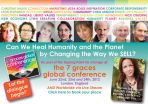(Press-News.org) Understanding linguistic diversity among London's schoolchildren is key for the city's future as a 'global player', research shows. A study funded by the Economic and Social Research Council (ESRC) mapped the distribution of languages spoken by London state school pupils. By combining language spoken with ethnicity, researchers have shed new light on patterns of educational inequality.
"London's increasing language diversity attracts much interest and debate among public service providers, educationalists and the public. Yet little was known about the numbers of people who speak different languages, and the implications of this dimension of population structure and change," explains Professor Dick Wiggins of the Institute of Education, University of London.
"Our research used data on the language spoken at home, requested for the first time in the 2008 Annual School Census. This shows that 60 per cent of London pupils record English as their first language and nearly 40 per cent a minority language. There are over 40 languages spoken by more than 1,000 pupils. Bengali, Urdu and Somali are the top languages spoken."
The Census showed that pupils in the 'black African' and 'white other' categories were among both the high and the low achievers. Language provided an extra dimension: within the black African category, English Yoruba and Igbo speakers were among the high achievers, while within the 'white other' group, Spanish, English, German, Serbian/Croat/Bosnian and French speakers appeared to be high achievers.
"The language we speak often says more about us than our broad ethnic group; it gives researchers clues about where people come from and their likely socio-economic position, religion and culture. It is therefore of great value to public services or any organisation that use social data. Knowing where the speakers are can help target services where they are most needed, as well as helping public organisations and businesses find people with language skills, particularly the more unusual ones where there is a sudden need," states Professor Wiggins.
"I believe that a plan is needed for developing and exploiting the linguistic skills we have available. Having speakers of all these languages means we have connections across the globe with other speakers of these languages. We are globally connected, which is an incredible benefit for international trade, particularly at this time when the balance of global economic power is changing and European economies are in such crisis."
"But having all these cultures represented in one city is also a source of cultural and creative enrichment. We benefit from the cross fertilisation of ideas and it means we live in a more dynamic, multi-faceted society. And global cities attract global companies so it's good for inward investment and tourism."
###
ESRC Press Office:
Danielle Moore
Email: danielle.moore-chick@esrc.ac.uk
Telephone 01793 413122
Jeanine Woolley
Email: jeanine.woolley@esrc.ac.uk
Telephone 01793 413119
Notes for editors:
1.This release is based on findings from 'Population, language, ethnicity and socio-economic aspects of education', funded by the Economic and Social Research Council. The Principal Investigator was Professor Dick Wiggins at the Institute of Education, University of London, with Ruth Lupton (now at the London School of Economics) as Co-Principal and Michelle von Ahn, London Borough of Newham, as User Fellow.
2. Languages spoken by pupils - interactive maps
3. To obtain copies of 'Language Capital' go to CfBT Education Trust
4. The project was part of Population, language, ethnicity and socio-economic aspects of education programme that finished in 2010. The primary aims of the UPTAP initiative were build capacity in secondary data analysis; promote the use of large-scale social science data sets, both qualitative and quantitative
5. The project involved analysis of the 2008 Pupil Level Annual School Census to map the distribution of languages spoken by London state school pupils. The was combined with the use of several administrative data sources in the London Borough of Newham, including the General Practice register with births and deaths, the Electoral Roll, Council Tax liable persons, Council Tax benefit recipients, the school pupil register, housing tenure lists and the Local Land Property Gazetteer.
6. The Economic and Social Research Council (ESRC) is the UK's largest organisation for funding research on economic and social issues. It supports independent, high quality research which has an impact on business, the public sector and the third sector. The ESRC's total budget for 2011/12 is £203 million. At any one time the ESRC supports over 4,000 researchers and postgraduate students in academic institutions and independent research institutes. More at www.esrc.ac.uk
7. The ESRC confirms the quality of its funded research by evaluating research projects through a process of peers review. This research has been graded as very good.
From June 22nd through 24th, 2012, London will be the site of the first 7 Graces Global Conference (7GGC), bringing together hundreds of participants wishing to express their commitment to business ethics, corporate responsibility, social wellbeing and environmental sustainability (http://the7gracesofmarketing.com/7GGC)
The 3-day conference will take place on Friday June 22nd through Sunday 24th, 2012, at The Window, 13 Windsor Street, London, N1 8QG, United Kingdom.
To encourage as many people for around the world to attend without increasing their carbon footprint, ...
Researchers in the University of Leicester's Department of Cell Physiology and Pharmacology have identified a cellular mechanism that could underlie the development of tinnitus following exposure to loud noises. The discovery could lead to novel tinnitus treatments, and investigations into potential drugs to prevent tinnitus are currently underway.
Tinnitus is a sensation of phantom sounds, usually ringing or buzzing, heard in the ears when no external noise is present. It commonly develops after exposure to loud noises (acoustic over-exposure), and scientists have speculated ...
This press release is available in German.
Around 100 billion neurons in the human brain enable us to think, feel and act. They transmit electrical impulses to remote parts of the brain and body via long nerve fibres known as axons. This communication requires enormous amounts of energy, which the neurons are thought to generate from sugar. Axons are closely associated with glial cells which, on the one hand, surround them with an electrically insulating myelin sheath and, on the other hand support their long-term function. Klaus Armin and his research group from the ...
A few hundred thousand billion free-floating life-bearing Earth-sized planets may exist in the space between stars in the Milky Way. So argues an international team of scientists led by Professor Chandra Wickramasinghe, Director of the Buckingham Centre for Astrobiology at the University of Buckingham, UK. Their findings are published online in the Springer journal Astrophysics and Space Science.
The scientists have proposed that these life-bearing planets originated in the early Universe within a few million years of the Big Bang, and that they make up most of the so-called ...
Philadelphia, PA, May 10, 2012 – These findings are not about the classic story of gift-giving, although the MAGI genes (officially named membrane associated guanylate kinase, WW and PDZ domain containing proteins) do influence brain function in important ways.
MAGI1 and MAGI2 are genes that code for the MAGI proteins. These proteins influence the development and function of synapses in the brain, the junctions where communication between nerve cells occurs.
Because they perform many important functions at brain synapses, researchers have made several attempts to tie ...
Chimpanzee Santino achieved international fame in 2009 for his habit of gathering stones and manufacturing concrete projectiles to throw at zoo visitors. A new study shows that Santino's innovativeness when he plans his stone-throwing is greater than researchers have previously observed. He not only gathers stones and manufactures projectiles in advance; he also finds innovative ways of fooling the visitors. The study, which was carried out at Lund University, has been published in PLoS One.
The new study looked at the chimpanzee's ability to carry out complex planning. ...
New in the journals: From how our attachment with our moms affects our future relationships, to the connection between family size and general intelligence.... and more.
Attachment to mom predicts ability to cope with future loss
How children cope with the loss of a loved one depends on their attachment to their mother and activity within their nervous system, according to a recent study. Adolescents with more attachment anxiety to their mom at age 14 had a harder time adjusting to the loss of a close social partner than adolescents with less attachment anxiety. "Adolescent ...
In the run-up to the G8 summit in Camp David, Maryland, the German National Academy of Sciences Leopoldina, in partnership with the national science academies of the G8 member states and seven other science academies, has equipped the world leaders with a set of recommendations on addressing some of the planet's most pressing challenges. The partners' three statements on the topics of water and energy, greenhouse gas reduction and ways of building resilience to natural and technological disasters will today be handed over to the participating governments for them to consult ...
Metro Tapas Bar & Lounge in Woodside, NY officially opens its doors this week offering patrons a unique dining experience in a comfortable bar like atmosphere. Executive Chef Lee Knoeppel's menu features a variety of small plates that take the diner on a culinary tour of American food with an ethnic twist. The restaurant's fare is inspired by local and regional favorites kicked up to reflect the refined palates of today's diners.
Knoeppel previously worked at the famed Craft Bar in Gramercy and was Chef de Cuisine at the Pridwin Beach Hotel on Shelter Island, NY. ...
WASHINGTON — National science academies from 15 countries issued joint statements today calling on world leaders who are about to meet at the upcoming G8 Summit and other international gatherings this year to give greater consideration to the vital role science and technology could play in addressing some of the planet's most pressing challenges. The "G-Science" statements recommend that governments engage the international research community in developing systematic, innovative solutions to three global dilemmas: how to simultaneously meet water and energy needs; how ...


